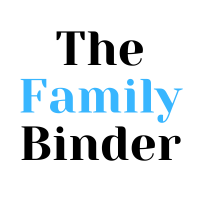As 2025 approaches, staying on top of your finances has never been more important. With rising economic uncertainty and constant changes in financial tools, many people struggle to manage multiple budgets, keep track of expenses, and prepare for unexpected costs.
If you’re feeling overwhelmed, binder budgeting could be your answer. This hands-on system helps you organize your money, gain clarity, and feel more confident about your financial future.
This guide is your essential handbook for binder budgeting in 2025. Inside, you’ll discover step-by-step strategies, must-have tools, expert tips, and troubleshooting advice. Get ready to simplify your finances and take control—one page at a time.
Understanding Binder Budgeting: The Basics and Benefits
Binder budgeting is a hands-on approach to managing your finances using a physical binder instead of relying solely on apps or spreadsheets. Unlike digital-only methods, binder budgeting offers tactile engagement, which can boost focus and accountability. Many layouts exist, from simple tabbed binders to creative color-coded systems. This method has roots in traditional envelope budgeting and has seen a major comeback as people crave more control and mindfulness. In fact, 63% of Americans say they prefer tangible budgeting methods. For a deeper dive into how financial planning binders can transform your money management, check out this overview of financial planning binders.
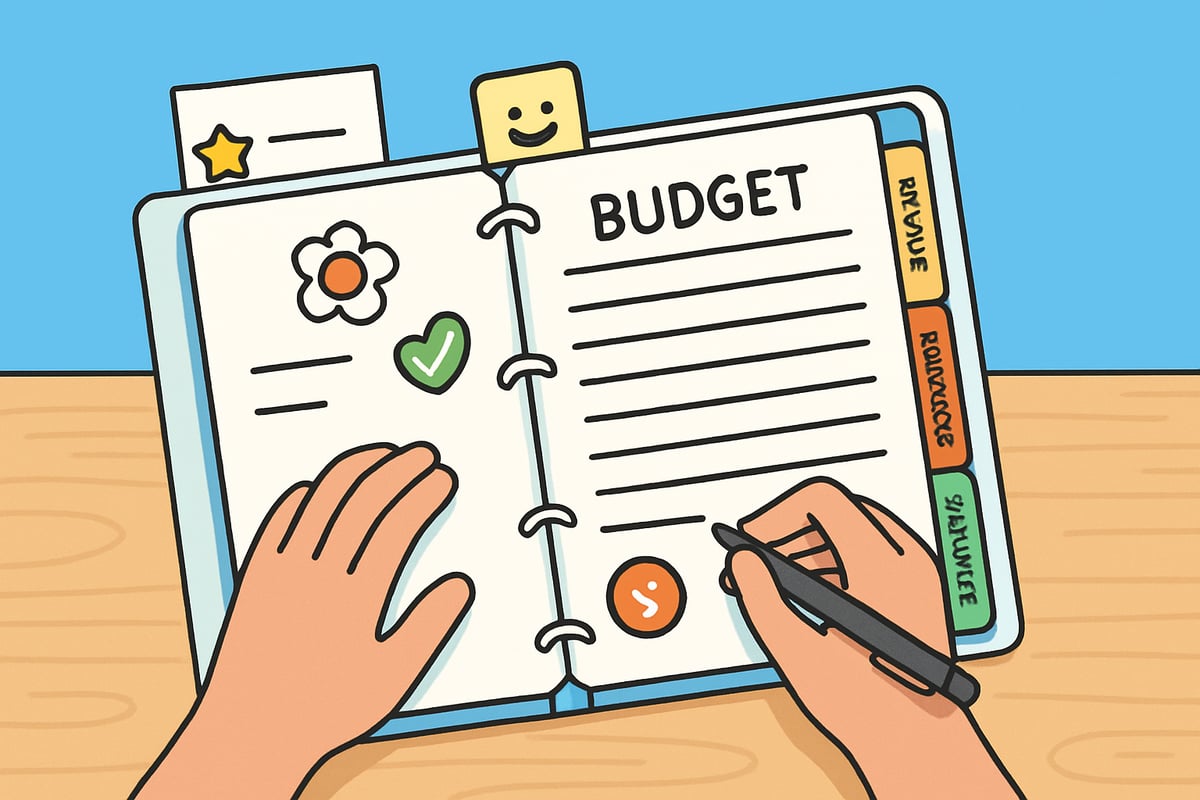
What is Binder Budgeting?
Binder budgeting stands out by making money management a physical, interactive experience. Unlike digital apps, the act of writing and organizing finances in a binder fosters a stronger connection to your goals. You can arrange your binder any way you like: monthly calendars, weekly trackers, or even a vision board section. The resurgence of binder budgeting is tied to its simplicity and ability to reduce screen time. Studies show that people who use binder budgeting feel more in control, with 63% reporting a preference for tangible tools over digital-only solutions.
Why Choose a Binder Over Apps?
Binder budgeting offers flexibility and customization you rarely find in budgeting apps. You can easily add, remove, or rearrange sections to fit your needs. Privacy is another plus—your financial details stay offline, reducing the risk of data breaches. Binder budgeting is ideal for families, couples, and individuals who want to involve others in their planning. Many users who switched from apps to binder budgeting say it helps them form better habits. In fact, 47% of budgeters report improved consistency when using physical tools.
Core Components of a Binder Budget
A successful binder budgeting system includes sections for income, expenses, savings, debt, goals, and receipts. Popular binder tabs might include "Monthly Budget," "Bill Tracker," and "Emergency Fund." You can adapt these sections for students, families, or retirees as your life changes. Visual aids like color-coding, stickers, and tracking sheets keep you engaged. Here’s a quick comparison:
| Feature | Pre-Made Binder | DIY Binder |
|---|---|---|
| Setup Time | Minimal | Flexible |
| Customization | Limited | Unlimited |
| Cost | Higher | Lower |
Choose what fits your style and needs for binder budgeting.
Binder Budgeting for Every Lifestyle
Binder budgeting can be tailored for anyone—single adults, families, freelancers, or retirees. Add sections for bills, subscriptions, or meal planning to integrate household management. One family of four reduced their expenses by 20% after customizing their binder budgeting system. Making it a family activity, like budgeting nights or letting kids decorate sections, increases engagement. Statistics show that people who use binder budgeting as a group are more likely to stick with their plan and succeed, no matter their demographic.
Setting Up Your Binder Budgeting System: Step-by-Step
Setting up your binder budgeting system is the foundation for achieving clarity and control over your finances. This process transforms chaotic spending into a streamlined, organized routine. By building a physical binder budgeting setup, you create a tangible space for your goals, plans, and progress. Let’s break down each step to ensure your system is effective, motivating, and perfectly tailored for your needs.
Choosing the Right Binder and Supplies
Selecting the right binder is the first key step in binder budgeting. Look for a sturdy binder in sizes like A5 or letter, with durable rings (either 3-ring or 6-ring). Choose one that feels comfortable to handle.
Gather essential supplies:
- Dividers for each section
- Pockets for receipts
- Pre-printed or printable budgeting sheets
- Colorful pens and highlighters
- A compact calculator
You can set up a binder budgeting system for under $30, especially if you use reusable options or recycled materials. Templates and printables are widely available online, making it easy to start with eco-friendly choices.
Creating Your Binder Budgeting Sections
A well-organized binder budgeting system relies on clear, logical sections. Start with tabs for monthly budgets, expense trackers, a bill calendar, debt repayment, and savings goals. Label each section clearly, and arrange them in the order you’ll use them.
Use visual aids like color-coded tabs or stickers to keep things engaging. Motivational trackers can help you stay on target. For extra organization tips, explore binder organization best practices for step-by-step setup ideas and troubleshooting.
Adapt your binder budgeting sections as your needs evolve. Ongoing organization is the key to lasting success.
Personalizing Your Budget Binder
Make your binder budgeting system uniquely yours. Add motivational quotes, a vision board, or financial affirmations to inspire you every time you open your binder. Choose a color scheme that sparks joy and keeps you engaged.
If you’re budgeting as a family or couple, add custom tabs for shared goals like vacation funds, holiday spending, or pet care. For portability, select a lightweight binder and use compact inserts so you can budget on the go.
Personal touches make the binder budgeting process more enjoyable and help you stay consistent.
Incorporating Accountability and Review Systems
Accountability is essential for binder budgeting success. Include monthly and weekly check-in pages to monitor your progress. Use graphs and charts to visualize how you’re moving toward your goals.
Set reminders for bill payments and savings deposits directly in your binder. Create an accountability system by sharing your binder budgeting journey with a partner or group—monthly reflection worksheets can help spark valuable conversations.
Reviewing your binder budgeting progress regularly ensures you catch issues early and celebrate every milestone along the way.
How The Family Binder Supports Organized Budgeting
The Family Binder takes binder budgeting to the next level. Its editable PDF format streamlines the process by consolidating financial, insurance, and estate information in one easy-to-access document. This system makes binder budgeting especially helpful for families, caregivers, or anyone handling complex finances.
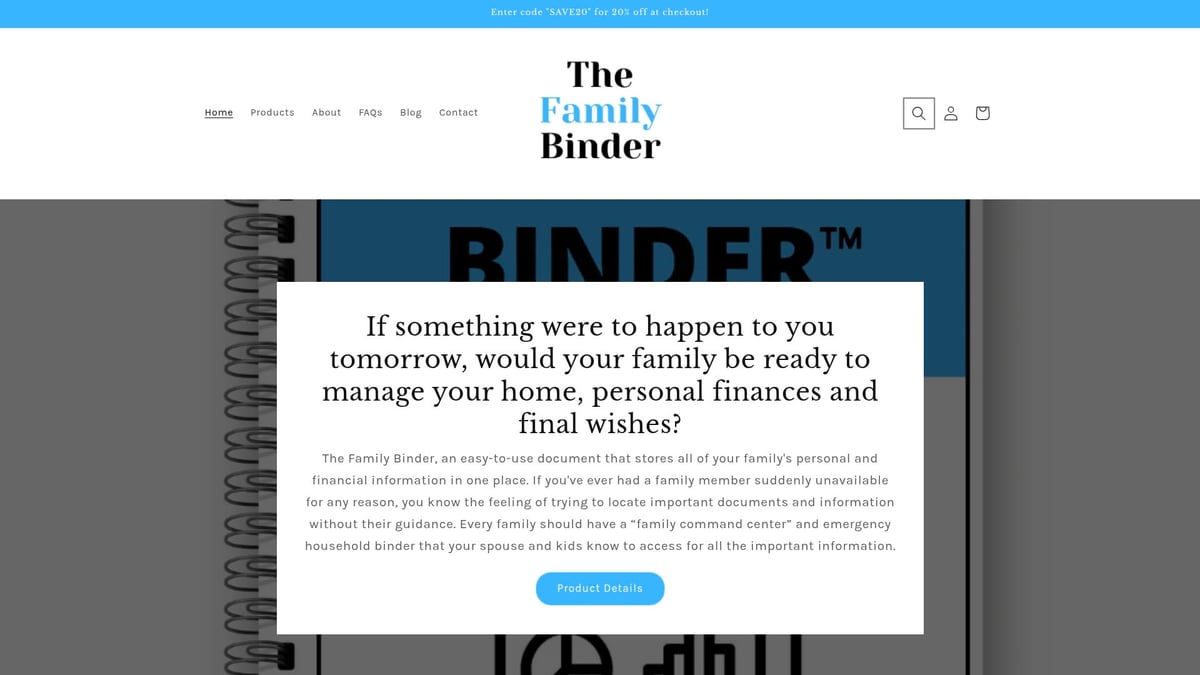
Customizable sections, printable pages, and digital convenience allow you to tailor your binder budgeting for every life stage. Use The Family Binder to organize bills, track goals, and keep important documents all in one place. The result is a binder budgeting system that saves time, reduces stress, and supports long-term financial health.
The Binder Budgeting Process: A Chronological Guide for 2025
Binder budgeting stands out as a practical, step-by-step system for managing your finances all year long. By following a chronological process, you’ll gain control, clarity, and peace of mind—no matter what 2025 brings. Let’s break down each stage to help you build a binder budgeting routine that lasts.
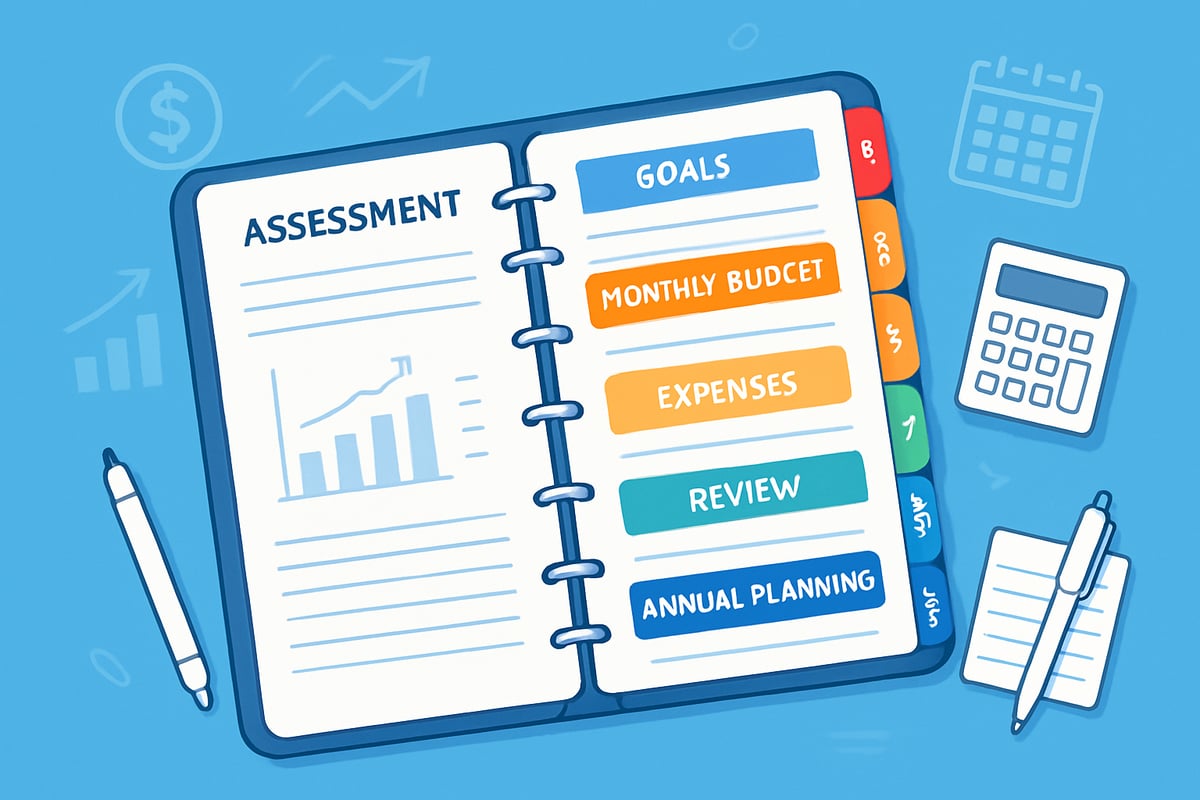
Step 1: Assessing Your Financial Situation
Start your binder budgeting journey by gathering every detail about your financial life. Collect information on income sources, fixed and variable expenses, outstanding debts, and assets. Use a dedicated assessment worksheet in your binder to create a clear financial snapshot.
Be honest and thorough—many people overlook hidden costs like subscriptions or annual fees. Including all these details ensures your binder budgeting is accurate from the beginning. Consider using checklists or a simple table to categorize expenses for easy reference. Remember, 56% of budgeters miss hidden expenses at this stage, so double-check your entries for completeness.
Step 2: Setting SMART Financial Goals
Once you have your financial baseline, binder budgeting helps you set SMART goals: Specific, Measurable, Achievable, Relevant, and Time-bound. Write down both short-term and long-term objectives, such as building an emergency fund or paying off a credit card.
Use goal-setting worksheets and visual trackers to keep these ambitions front and center. Clear, written goals within your binder budgeting system boost motivation and focus. Data shows that goal-oriented budgeters save 30% more on average, highlighting the power of intentional planning.
Step 3: Creating Your Monthly and Weekly Budgets
Design monthly and weekly budget sheets that break down your income, fixed and variable expenses, savings, and debt payments. Binder budgeting thrives on structure, so categorize everything—housing, utilities, groceries, entertainment, and more.
A sample layout might include columns for planned versus actual spending. This approach allows flexibility while keeping you grounded in reality. The binder budgeting method makes it easy to adjust categories as your needs change, ensuring your plan remains both realistic and adaptive.
Step 4: Tracking Expenses and Adjusting in Real Time
Daily and weekly expense tracking is a cornerstone of binder budgeting. Use logs, pockets for receipts, and tracking sheets to monitor every transaction, whether by cash, card, or digital payment.
Spotting spending leaks early lets you adjust your budget before small issues become big problems. Most successful binder budgeting users review their expenses weekly, which leads to better financial outcomes. Keep your tracking visual—color-coded charts or graphs can make this process more engaging and insightful.
Step 5: Reviewing and Reflecting Monthly
At the end of each month, use your binder budgeting review checklist to analyze your progress. Compare planned versus actual spending, assess how close you are to your goals, and note any recurring variances.
Monthly reflection worksheets help you celebrate wins and identify areas for improvement. Adjust your budget categories for the next month based on these insights. Recognizing and rewarding your progress keeps the binder budgeting process enjoyable and sustainable.
Step 6: Annual Planning and Binder Refresh
Every year, take your binder budgeting to the next level with an annual review. Summarize income changes, set new goals, and plan for taxes or upcoming expenses. Archive old sheets and refresh your binder sections for the year ahead.
To simplify this process, many find it helpful to use resources like Simplifying taxes and annual reviews, which shows how binder budgeting can streamline annual planning and financial review. Annual check-ins increase your financial confidence and keep your strategy responsive to life’s changes.
Step 7: Staying Motivated and Accountable
The final piece of binder budgeting success is building habits and accountability. Set reminders for regular check-ins, join budgeting communities, or create a reward system for meeting your goals.
Habit trackers and monthly challenges can inject fun into your routine. If you share finances, consider accountability partners or group reviews to keep everyone motivated. By making binder budgeting a consistent practice, you set yourself up for long-term financial health.
Optimizing Your Binder Budget for 2025 Trends and Challenges
Staying ahead in 2025 means adapting your binder budgeting approach to new financial realities. With costs rising and lifestyles shifting, optimizing your system helps you stay resilient, organized, and confident through every challenge. Let’s explore how to future-proof your binder budgeting for the year ahead.
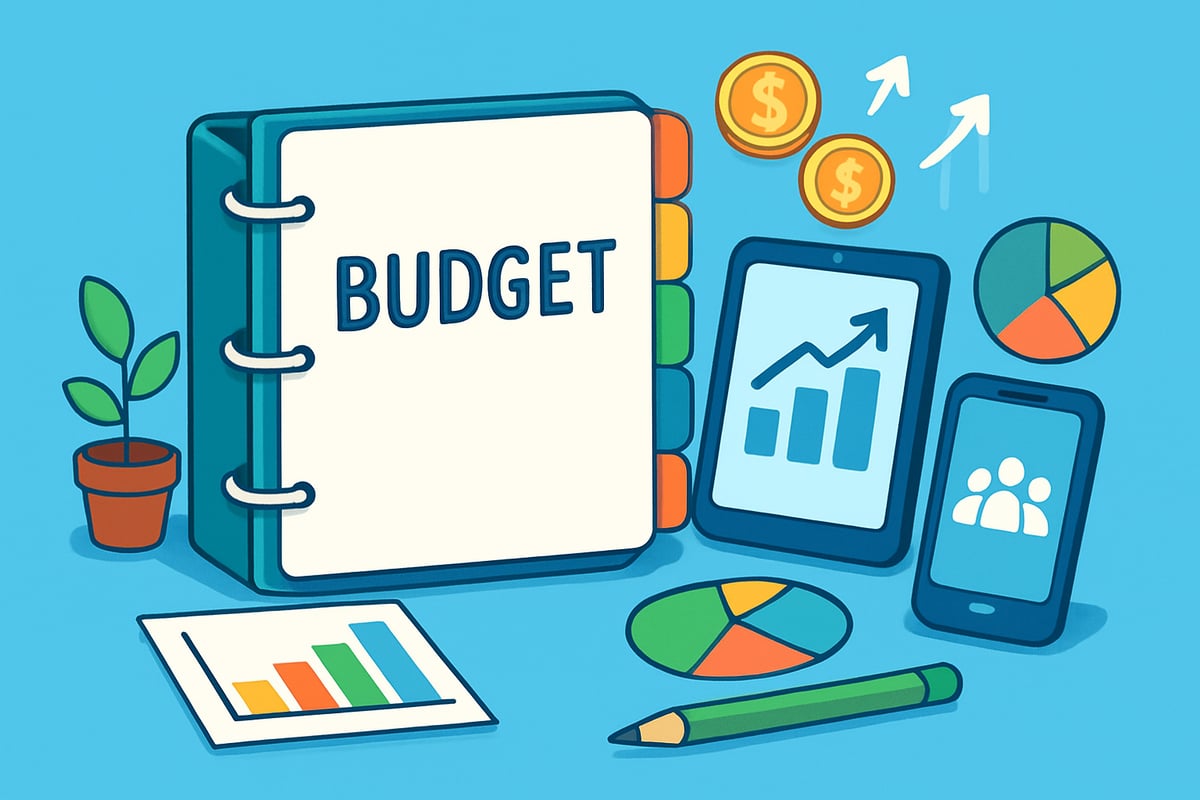
Navigating Inflation and Economic Uncertainty
Inflation and unpredictable markets are top concerns for 2025. Binder budgeting gives you a practical way to track every dollar and adjust quickly as prices shift. Start by reviewing expense categories monthly and flagging areas sensitive to inflation, such as groceries and utilities.
Build flexible categories that let you shift funds between needs as costs rise or fall. Emergency funds are more crucial than ever; create a special section in your binder budgeting system for unexpected expenses. According to recent surveys, 68% of Americans expect higher living costs in 2025, so plan ahead.
Real-life example: If your utility bill spikes, your binder budgeting can help you reallocate money from entertainment or dining out for that month. This hands-on approach makes adapting to economic swings much less stressful.
Integrating Digital Tools with Your Binder System
Hybrid systems are gaining popularity, blending paper-based binder budgeting with digital convenience. Use budgeting apps to snap receipts, set reminders, or export spending data, then print summaries for your binder.
This combination offers the best of both worlds: the tactile motivation of binder budgeting and the efficiency of technology. To maximize results, compare digital and physical tracking methods—see which helps you stick to your goals.
For a deeper dive into the strengths and limitations of these systems, check out this guide on budget binders and cash envelope stuffing. Remember to keep your digital data secure and use strong passwords if you store any financial info online.
Sustainable and Eco-Friendly Budgeting Practices
Eco-consciousness is shaping how people approach binder budgeting in 2025. Choose binders made from recycled materials and reusable inserts to minimize waste. Go digital with templates when possible, printing only what you need.
Share printable sheets with family members or budgeting partners to avoid duplication. Look for pens, dividers, and pockets that are refillable or recyclable. An eco-friendly binder budgeting setup not only helps the planet but also keeps your system fresh and uncluttered.
Statistics show that 39% of budgeters now seek sustainable options. Small changes, like reusing tabs or switching to digital review sheets, make a big impact over time.
Budgeting for Modern Family and Lifestyle Needs
Modern households are more complex than ever, with multiple income streams, side gigs, and shared expenses. Binder budgeting adapts well to these changes. Add custom tabs for remote work income, childcare costs, or gig economy payments.
For multi-generational families, assign sections for each member’s responsibilities. Use color-coding or stickers to keep everyone organized. A table in your binder budgeting system can help track who pays which bills and when.
Did you know that one in three households now manages more than one income source? Binder budgeting empowers you to keep track of it all, ensuring nothing falls through the cracks.
Planning for Major Life Events in 2025
Big events—like weddings, moves, or retirement—can disrupt even the best plans. Binder budgeting makes it easy to create event-specific sections, from checklists to savings trackers. For example, if you’re planning a wedding, dedicate a tab to vendor payments, guest lists, and a countdown calendar.
Update your binder budgeting system as plans evolve, adjusting savings goals or expense categories as needed. This proactive approach prevents last-minute surprises and keeps you in control during transitions.
Remember, binder budgeting isn’t just for daily expenses—it’s your roadmap for life’s milestones, helping you manage change with confidence.
Troubleshooting Common Binder Budgeting Issues
Even the best binder budgeting systems can hit a few bumps in the road. From waning motivation to unexpected expenses, troubleshooting is key to long-term success. Let’s tackle the most common obstacles so you can keep your binder budgeting journey on track.
Overcoming Inconsistency and Budget Fatigue
Staying consistent with binder budgeting can be challenging, especially when routines get disrupted or the process feels repetitive. Motivation often dips after the initial excitement, but small tweaks can reignite your interest.
Try these strategies:
- Use colorful progress charts to visualize milestones.
- Rotate motivational quotes or affirmations in your binder.
- Join a monthly challenge or add themed stickers for a fun twist.
- Set micro-goals and reward yourself for hitting them.
If you need a streamlined approach, the Easy budget binder setup guide can help make daily tracking less overwhelming. Remember, even short, consistent check-ins add up to big results.
Dealing with Unexpected Expenses
No matter how thorough your binder budgeting, life throws curveballs. Medical bills, car repairs, or surprise events can disrupt even the best plans. The key is flexibility.
Include an emergency fund section in your binder. Keep a dedicated pocket or tab for tracking unexpected expenses. When surprises hit:
- Log the expense immediately.
- Review your buffer or emergency fund.
- Adjust your categories for the month.
- Reflect on what changes might prevent future surprises.
A simple “emergency log” page can help you spot patterns and prepare smarter. Flexibility in your binder design ensures you’re ready for whatever comes next.
Managing Shared and Family Budgets
Coordinating binder budgeting with a partner or family requires teamwork and transparency. Assign roles—like bill payer, receipt organizer, or savings tracker—to make the process collaborative.
Hold regular family budget meetings using worksheets that outline goals and progress. Open communication helps prevent misunderstandings and builds trust. According to Family budgeting and organization tips, involving children in the process can boost financial responsibility for the whole household.
Joint budgeters often report higher savings rates, so make binder budgeting a shared activity for greater success.
Keeping Your Binder Secure and Accessible
Protecting your binder budgeting system is crucial, especially if it holds sensitive information. Store your binder in a safe but accessible spot at home. For added security:
- Back up important sheets by scanning them.
- Use a password-protected digital copy if sharing with family.
- Create emergency instructions for trusted individuals.
Balance privacy with convenience. If you travel, consider a compact binder or digital backup on a secure device. A secure system keeps your financial information safe and your budgeting habits uninterrupted.
Advanced Strategies and Expert Tips for Binder Budgeting Success
Mastering binder budgeting means going beyond the basics. Advanced strategies and expert tips help you maximize results, stay motivated, and transform your financial routine into a powerhouse for long-term success.
Leveraging Visual Tools and Data Analytics
Visual tools bring data to life in binder budgeting. Charts, graphs, and color-coded trackers make it easy to spot trends and celebrate progress. For example, you might use a simple bar graph to compare expenses month-over-month or color-coded tabs to distinguish savings from spending.
A quick table for visualization:
| Tool | Purpose | Benefit |
|---|---|---|
| Bar Graph | Track expenses | Spot trends |
| Pie Chart | Budget categories | See proportions |
| Color Codes | Section highlights | Quick reference |
Integrating printable sheets or digital exports, such as those found in Create a budget binder, ensures your binder budgeting process is both insightful and actionable.
Implementing the Cash Envelope System with Your Binder
The cash envelope system is a time-tested method for controlling spending. To use it with binder budgeting, dedicate envelopes or pockets for categories like groceries, dining out, or entertainment. Each envelope holds your allotted cash for the month.
Tips for safe cash management:
- Store envelopes in a secure binder section.
- Label each clearly.
- Reconcile cash at week's end.
Cash envelopes give you a tangible sense of limits, making binder budgeting more hands-on and effective. Many users find that envelope systems reduce discretionary spending by 20%.
Combining Binder Budgeting with Sinking Funds
Sinking funds prepare you for irregular expenses—holidays, repairs, or insurance premiums—by setting aside small amounts each month. In binder budgeting, create dedicated tabs or trackers for each goal.
Common sinking fund categories:
- Holidays and gifts
- Car maintenance
- Annual subscriptions
Use a tracker to chart your progress. For a structured approach, explore Budgeting with a printable budget binder to organize your sinking funds and stay ahead of big expenses.
Staying Inspired: Community, Resources, and Ongoing Learning
Binder budgeting thrives when you’re connected and inspired. Join online forums or social media groups to share ideas and challenges. Try monthly challenges, such as a no-spend week or savings sprint, to keep things fresh.
Recommended resources:
- Budgeting podcasts
- Printable worksheets
- Financial literacy books
Participating in workshops and leveraging community support ensures you stay motivated and keep learning new binder budgeting techniques.
Scaling Your Binder Budget for Wealth Building
As your financial confidence grows, binder budgeting can evolve to track investments, retirement accounts, and passive income. Add sections for stocks, real estate, or side hustles. Use summary sheets to monitor net worth and set long-term goals.
A sample binder section for wealth building:
- Investment summary
- Retirement tracker
- Passive income log
Statistics show that budgeters who track investments increase net worth by 18% over five years. Binder budgeting is not just about managing money—it’s about building wealth for the future.
Now that you’ve seen how binder budgeting can simplify your finances and give you peace of mind, why not take the next step toward total organization? Imagine having all your family’s important financial details, plans, and records in one easy-to-use, printable binder—ready whenever you need it. With The Family Binder, you don’t have to start from scratch; just fill in the blanks, customize each section, and watch your confidence grow. If you’re ready to make 2025 your most organized and stress-free year yet, Download Now and get started with your own Family Binder today!
